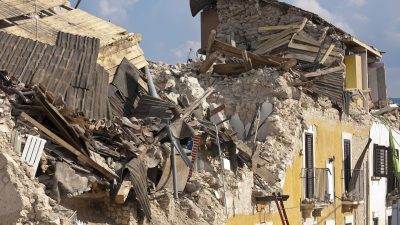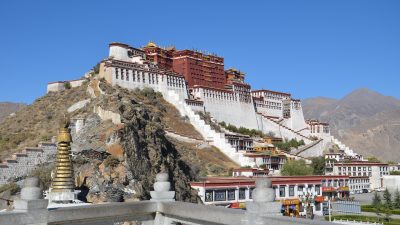A Deep Dive into Indonesia’s Catastrophic Eruption and the Devastating Aftermath
The Kelud volcano, located in East Java, Indonesia, erupted violently on 13th February 2014, unleashing a massive mudflow, or lahar, that devastated the surrounding regions. This eruption was a catastrophic event, combining volcanic activity with the destructive power of heavy rainfall, which triggered the deadly mudflow. The eruption itself was preceded by a series of seismic tremors, signalling that the volcano was becoming increasingly active. As the eruption unfolded, plumes of ash shot up into the sky, forcing tens of thousands of people living in nearby areas to evacuate. The mudflow, which followed soon after, swept through several villages, burying homes, farms, and critical infrastructure. This natural disaster left a lasting mark on the region, affecting not just the physical landscape, but also the lives of the people who called Kelud and its surrounding villages home.
The immediate aftermath of the disaster was grim. At least 16 people were confirmed dead as a result of the mudflow, though the true toll may have been higher as many victims were swept away by the rushing debris. Over 200,000 people were affected by the eruption, with many forced to seek refuge in evacuation shelters. The eruption caused significant property damage, with thousands of homes destroyed or severely damaged, and agricultural land rendered unusable due to ash fall and the lahar. Villages such as Sumberwuluh, Kepung, and Tulungrejo saw homes buried under thick layers of mud, leaving residents in desperate need of assistance. Roads were rendered impassable, and the already vulnerable communities were left scrambling for resources in the wake of the destruction.
Rescue operations and relief efforts were immediately put into motion, with the Indonesian government and local authorities mobilising to aid the affected populations. However, the scale of the disaster left many questioning the efficiency of the response. Despite the early warning signs and evacuation orders, many victims were unable to escape in time, and the logistical challenges of delivering aid to remote areas hampered the speed of recovery. In the following days, rescue teams worked tirelessly to recover survivors and assist those who had lost everything. Despite these efforts, the emotional and physical scars of the Kelud mudflow would remain for years to come, as the community worked to rebuild their lives and cope with the aftermath of one of Indonesia’s most devastating natural disasters.
What Triggered the Kelud Mudflow?
The Kelud mudflow disaster was primarily triggered by the volcanic eruption of Mount Kelud, an active stratovolcano located in East Java, Indonesia. The eruption occurred after several weeks of increased seismic activity and heightened volcanic alerts. Kelud’s eruptions have a history of violent explosions, and the 2014 event proved no different. The eruption expelled a large volume of ash, gas, and volcanic debris into the atmosphere, reaching up to 17 kilometres in height. This initial volcanic activity was followed by torrential rainfall, which exacerbated the situation, causing the volcanic ash and debris to mix with the rainwater. The result was a massive mudflow, or lahar, which rapidly descended the volcano’s slopes.
The lahar, fuelled by the combination of ash, debris, and water, travelled down the river valleys surrounding the volcano, inundating villages, agricultural lands, and infrastructure in its path. The mudflow caused significant destruction, burying entire settlements under thick layers of mud and ash, disrupting transportation routes, and contaminating local water supplies. The mudslides not only caused physical damage but also made rescue and recovery operations extremely challenging due to the vast scale of the destruction. The event’s severity was compounded by the fact that many of the affected areas were located in valleys, making them highly susceptible to the flow of lahars, which had been triggered by both the eruption’s force and the continuing rain.
Exploring the Impact on Lives and Livelihoods
• Fatalities & Injuries:
The Kelud mudflow disaster tragically claimed the lives of at least 16 people, with many others seriously injured. The sudden onset of the mudflow, combined with the violence of the eruption, caused multiple casualties. Survivors were often left with severe injuries such as broken limbs, burns from hot volcanic ash, and trauma caused by debris and collapsing structures.
• Displacement:
Over 200,000 people were displaced from their homes as a result of the eruption and mudflow. The evacuation process was urgent, as residents living in the high-risk areas were forced to leave their homes for shelters. Many of these displaced individuals lost everything, including their homes, livelihoods, and in some cases, family members.
• Property Damage:
The destruction of property was widespread, with thousands of homes, farmland, and essential infrastructure being buried or severely damaged by the mudflow. The eruption destroyed crops, livestock, and water sources, which had long-term economic impacts on the region’s agricultural economy. Recovery and rebuilding efforts took months and cost millions of pounds.
• Rescue and Recovery Challenges:
The scale of the damage made rescue and recovery operations particularly challenging. The thick mud and debris obstructed roads, preventing access to affected areas. Despite significant efforts from local and national emergency teams, the extent of the destruction meant that rescue operations were slow, with some areas being unreachable for several days following the eruption.
• Psychological and Emotional Impact:
In addition to the physical destruction, the disaster caused deep psychological trauma to the affected communities. Survivors were left grieving for lost loved ones, struggling to come to terms with the destruction of their homes and livelihoods. Psychological support and counselling became a crucial part of the recovery process as many people dealt with the trauma and emotional toll of the disaster.
Government Response and Evacuation Efforts
In the wake of the Kelud eruption, the Indonesian government quickly implemented evacuation plans for the affected regions. As the eruption’s warning signs became more evident, authorities urged residents living near the volcano to evacuate in anticipation of the eruption. Emergency shelters were set up, and rescue teams were mobilised to assist with evacuations. However, despite these efforts, there were criticisms regarding the timing and effectiveness of the response. Some locals reported confusion during the evacuation process, citing a lack of clear communication from authorities. This delay in evacuating certain communities contributed to preventable fatalities and injuries.
The controversy surrounding the government’s response also extended to resource management during the aftermath. While emergency relief efforts began promptly, many victims complained about the insufficient distribution of supplies, including food, clean water, and medical aid. Rescue and recovery operations were hampered by damaged infrastructure, making it difficult to reach isolated communities. Furthermore, the government faced accusations of being unprepared for the scale of the disaster, despite having early warnings about volcanic activity. These concerns sparked debates about the need for better disaster preparedness, clearer communication, and more effective resource allocation in the future to mitigate the impact of such catastrophic events.
The Role of Technology in Forecasting and Monitoring Kelud
Was the technology available to predict the Kelud eruption and mudflow truly sufficient, or did it fail to adequately warn the population? Indonesia has invested heavily in monitoring and forecasting systems to detect volcanic activity, including seismographs and volcanic observatories. In the months leading up to the eruption, there were clear signs of increased seismic activity, which was noted by experts. However, despite these warnings, the actual eruption and subsequent mudflow caught many by surprise. How could technology, designed to predict such disasters, have missed the scale and timing of such a destructive event?
It’s perplexing whether the issue was with the technology itself or how the data was interpreted and communicated. While some argue that the eruption was too unpredictable to fully anticipate, others question if better coordination between monitoring agencies, clearer public messaging, and faster response protocols might have minimised the damage. Did the technology provide enough warning but fail to reach those who needed it? Or did the systems used to assess volcanic threats simply not account for the specific combination of factors that led to such a severe mudflow? The ambiguity around these questions only adds to the complexity of understanding whether more could have been done to save lives and prevent the destruction that followed.
The Government’s Role and Mismanagement of Resources
The government’s handling of the Kelud mudflow disaster has sparked intense controversy, with critics questioning both the preparedness and efficiency of the response. While officials scrambled to enact evacuation measures after the eruption, many locals felt the government was too slow in mobilising resources and issuing timely warnings. Some residents reported receiving evacuation orders only after the eruption had already begun, leaving them vulnerable to the ensuing chaos. Why was the government’s response so reactive instead of proactive? Could more lives have been saved if evacuations were initiated earlier, and if the communication was clearer and more decisive? The delayed evacuation raised uncomfortable questions about the competency of local authorities in handling such a high-risk, catastrophic event.
Adding fuel to the fire, the government’s relief efforts were widely criticised for being disorganised and insufficient. After the mudflow subsided, survivors were left without access to basic necessities like food, clean water, and medical aid for days, leading to further frustration and resentment. Many people who sought shelter in evacuation centres complained about overcrowding, inadequate supplies, and a general lack of coordinated efforts to provide support. The questions surrounding the mismanagement of resources are difficult to ignore—was the government underprepared, or was it a matter of bureaucracy and red tape delaying essential aid? These controversies have led many to believe that, while the disaster was undoubtedly catastrophic, the true failure may lie in the systemic gaps that still plague Indonesia’s disaster response and preparedness strategies.
Comparing the Kelud Mudflow with Other Volcanic Disasters
When comparing the Kelud mudflow disaster to other major volcanic catastrophes like the 1991 eruption of Mount Pinatubo and the 1980 eruption of Mount St. Helens, it’s impossible to ignore the stark contrasts in the death toll and the government’s preparedness. Pinatubo, for instance, caused over 800 fatalities, yet the response was far more coordinated. The Philippines had time to prepare due to clearer early warnings and a more robust evacuation plan. Similarly, in the case of Mount St. Helens, despite the devastating loss of 57 lives, the U.S. government and local authorities had a much more organised disaster management system in place. What’s particularly provocative here is the question: why did Kelud, with all its volcanic activity history, fail to meet even the basic standards of preparedness and response?
The death toll of 16 from Kelud might seem lower compared to Pinatubo or St. Helens, but the sheer devastation and destruction were no less intense. The timing of the eruption, combined with the government’s slow response, led to a much more chaotic aftermath. The real question is: Could more lives have been saved with the same level of foresight and preparedness that countries like the Philippines or the United States demonstrated during their volcanic crises? The debate around the differing levels of response raises uncomfortable truths about whether Indonesia’s disaster management systems are truly up to par or if they remain dangerously underprepared for such catastrophic events. It’s clear that, while the death toll may have been lower, the real cost of the Kelud eruption could have been far greater, and the comparison to other global eruptions only highlights Indonesia’s glaring gaps in disaster response.
The Environmental Impact: After the Lava and Ash Settled
The environmental impact of the Kelud eruption and subsequent mudflow was profound, with long-lasting consequences for the region’s ecosystem. The eruption itself, combined with the mudflow, led to the widespread destruction of farmland and natural habitats. As the volcanic ash and debris settled, vast stretches of agricultural land were buried, rendering them unusable for farming. This damage severely affected local communities whose livelihoods were dependent on agriculture, particularly the cultivation of rice, vegetables, and fruit crops. The volcanic ash, though initially beneficial for soil fertility, covered large areas, rendering the soil too acidic and disrupted farming for years. This environmental toll left local farmers grappling with a significant loss of income and a lengthy recovery process.
In addition to the damage to agricultural lands, the mudflow polluted rivers and waterways, which were crucial sources of water for both irrigation and daily use. The ash and debris from the eruption contaminated water supplies, making them unsafe for drinking and irrigation. The environmental damage didn’t stop at the land; wildlife habitats were also severely affected. Many animals in the region were displaced or killed by the force of the mudflow, while others struggled to survive in the altered environment. Over time, the recovery of the local ecosystem became a complex and lengthy process, as it required efforts not only to restore the land but also to rehabilitate local wildlife populations and improve water quality. The aftermath of the eruption highlighted the intricate link between human activity, the environment, and the need for comprehensive disaster planning that accounts for the long-term ecological impact.
How Can Indonesia Better Prepare for Future Disasters?
The Kelud mudflow disaster offered several important teachings about disaster preparedness, response, and recovery. One of the most critical takeaways was the realisation that early warning systems, while helpful, need to be more comprehensive and accurately communicated to communities at risk. Despite warnings about increased seismic activity, the eruption’s suddenness highlighted how the existing systems were not always effective in providing enough time for evacuation or in reaching people in remote areas. This underscored the importance of improving communication channels and ensuring that all affected communities are informed well in advance of any imminent danger.
Another significant lesson was the need for better infrastructure resilience, particularly in areas vulnerable to volcanic events. The destruction of roads, bridges, and other key infrastructure after the eruption made it difficult for rescue teams to reach the most affected areas, delaying recovery efforts. Additionally, the economic devastation caused by the loss of agricultural land demonstrated the importance of building a disaster-resistant economy that can withstand such shocks. The government must invest in long-term recovery plans that not only focus on immediate relief but also provide sustainable support for communities in the years following a disaster. Ultimately, the Kelud mudflow disaster exposed the need for a more coordinated, proactive, and resilient approach to disaster management, one that can better anticipate and mitigate the far-reaching impacts of natural catastrophes.
The Potential for Another Catastrophe
The future of Mount Kelud remains a significant concern for both local residents and authorities. As an active volcano, Kelud has a history of violent eruptions, and the 2014 eruption was a painful reminder of the potential dangers it poses. With its high level of volcanic activity, including frequent seismic tremors and eruptions in the past, there’s always the looming possibility of another eruption. Experts closely monitor the volcano’s activity, using tools like seismographs, gas measurements, and satellite imagery to predict potential eruptions, but the unpredictability of volcanic behaviour means that no forecast is ever guaranteed.
The question of whether Kelud will erupt again is not just about the volcano’s physical activity; it also touches on the potential for another catastrophe. A future eruption could have devastating effects on the surrounding communities, agriculture, and infrastructure. Given the 2014 eruption’s aftermath, the real concern is whether Indonesia has done enough to improve its disaster preparedness and response systems in the years following that event. There’s a need for stronger early warning systems, better evacuation procedures, and more resilient infrastructure to minimize damage in case of future eruptions. The possibility of another eruption is not a matter of “if,” but “when,” and it’s vital that lessons learned from past disasters are applied to safeguard communities in the future.
Conclusion
The Kelud mudflow disaster was a stark reminder of the devastating power of volcanic eruptions and the unpredictable aftermath that follows. While the eruption caused tragic loss of life and widespread destruction, it also highlighted serious gaps in Indonesia’s disaster preparedness and response systems. The slow evacuations, lack of clear communication, and insufficient infrastructure exposed the vulnerabilities of a nation living in the shadow of active volcanoes. As the region recovers, the lessons learned from Kelud emphasise the need for better coordination, faster response, and a deeper integration of both scientific monitoring and local knowledge in disaster management strategies. Only through these improvements can future catastrophes be mitigated more effectively.
FAQ
- What caused the Kelud mudflow disaster?
The Kelud mudflow disaster was caused by a violent volcanic eruption followed by heavy rainfall, which triggered lahars (volcanic mudflows) that engulfed surrounding areas.
- How long did it take for the region to recover?
The recovery process took several years, particularly for agriculture, as volcanic ash and mud buried farmland, making it unproductive for an extended period.
- Was the Kelud eruption predicted?
Seismic activity leading up to the eruption was detected, but the eruption’s scale and timing took many by surprise, leading to delays in evacuation and response.
- How did the local community cope with the disaster?
The local community faced significant challenges, with many residents temporarily displaced and struggling to rebuild homes, livelihoods, and agricultural lands.
- What are the current efforts to prevent future disasters from Mount Kelud? Ongoing monitoring, improved evacuation protocols, and better disaster preparedness plans are being implemented to reduce the impact of future eruptions.
References
USGS – Impacts & Mitigation – Kelud 2014:
Volcano Discovery – The (sub-)plinian eruption of Mt Kelut volcano
Indonesia: Mt. Kelud Volcano




